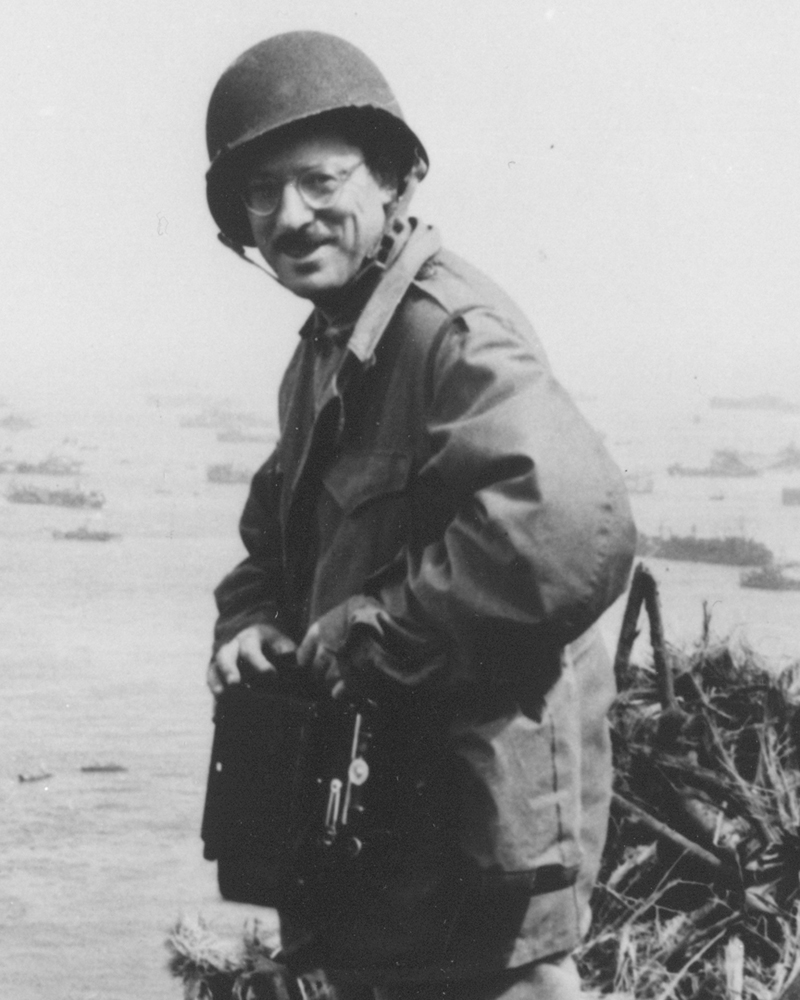Iwo Jima: The Story Behind the Iconic Photo
From February 19 to March 26, 1945, American and Japanese forces were locked in a grueling and bloody battle on the island of Iwo Jima. Taking the island would be a strategic victory for the United States that would put the nation’s military in even closer range than when troops captured the island of Saipan. The battle ended with a clear American victory, but well before it did, one of the most iconic photos of all time was taken.
Though it may seem like a simple action shot of American Marines claiming the island in the name of the United States, few things are ever that simple. The iconic photograph, which depicts Sergeant Michael Strang, Corporal Harlon Block, Private First Class Rene Ganon, Corporal Ira Hayes, Corporal Harold Schultz, and Private First Class Franklin Sousley triumphantly raising the American flag atop Mount Suribachi, was actually the second of two flag-raising pictures taken that day.
The First Flag-Raising
Early on in the five-week-long battle between US and Japanese troops for control of Iwo Jima, it was clear that the dominant vantage point for the Japanese defenders was Mount Suribachi. It was from its summit that they fired down on the US Marines from a series of bunkers and pillboxes. In order to capture and hold Iwo Jima, it was clear that Mt. Suribachi would need to come under American control. It took only four days into the battle for the United States to conquer Suribachi, and it was after this early victory that the story of the two flag-raisings of February 23 begins.
The first flag was raised on the mountaintop shortly after the Marines made the summit, but while there were still Japanese forces in the area. Staff Sergeant Louis R. Lowery was responsible for taking the photo of of a patrol from the 2nd Battalion, 28th Marine Regiment, 5th Marine Division planting a flag atop Mt. Suribachi.
Though there were Japanese forces in the immediate area, the patrol was met with little resistance and was able to successfully plant the flag on the mountaintop. From the beach below, American servicemen cheered as the flag flew high atop Mt. Suribachi. As if on cue, the nearby Japanese troops started firing on the flag patrol but were quickly neutralized.
The Second Iwo Jima Photo
Photographer Joe Rosenthal has received criticism in the past for staging the famous "Raising of the Flag on Iwo Jima" photo, but the need for a second flag arose when Secretary of the Navy James Forrestal, who had just come ashore when the first photo was taken, wanted the flag as a souvenir, and 2nd Battalion Commander Chandler Johnson wasn't willing to let it leave his battalion’s possession.
Hearing of Forrestal’s plan to take the flag, Johnson had it removed and ordered his assistant operations officer, Lieutenant Ted Tuttle, to find a larger replacement flag. How the image even came about was, according to Rosenthal, a matter of chance.
He had approached the summit of Suribachi after Lowery had already snapped his photo. In fact, the two crossed paths and Rosenthal considered turning around until Lowery tipped him off to the vantage points atop the mountain. It was while he prepped a spot to take snapshots from a suitable location that, out of the corner of his eye, he saw the Marines placing the second flag. To avoid missing the shot, he spun quickly and snapped the soon-to-be-famous photo of Sergeant Michael Strank, Corporal Harlon Block, Privates First Class Franklin Sousley, Rene Gagnon, Ira Hayes, and Harold Schultz without using his viewfinder.
Associated Press photo editor John Bodkin was responsible for transmitting the image to his New York headquarters after the film had been sent to Guam and developed by George Tjaden. Within less than 18 hours of the picture being taken, it became an iconic image of triumph in World War II.









